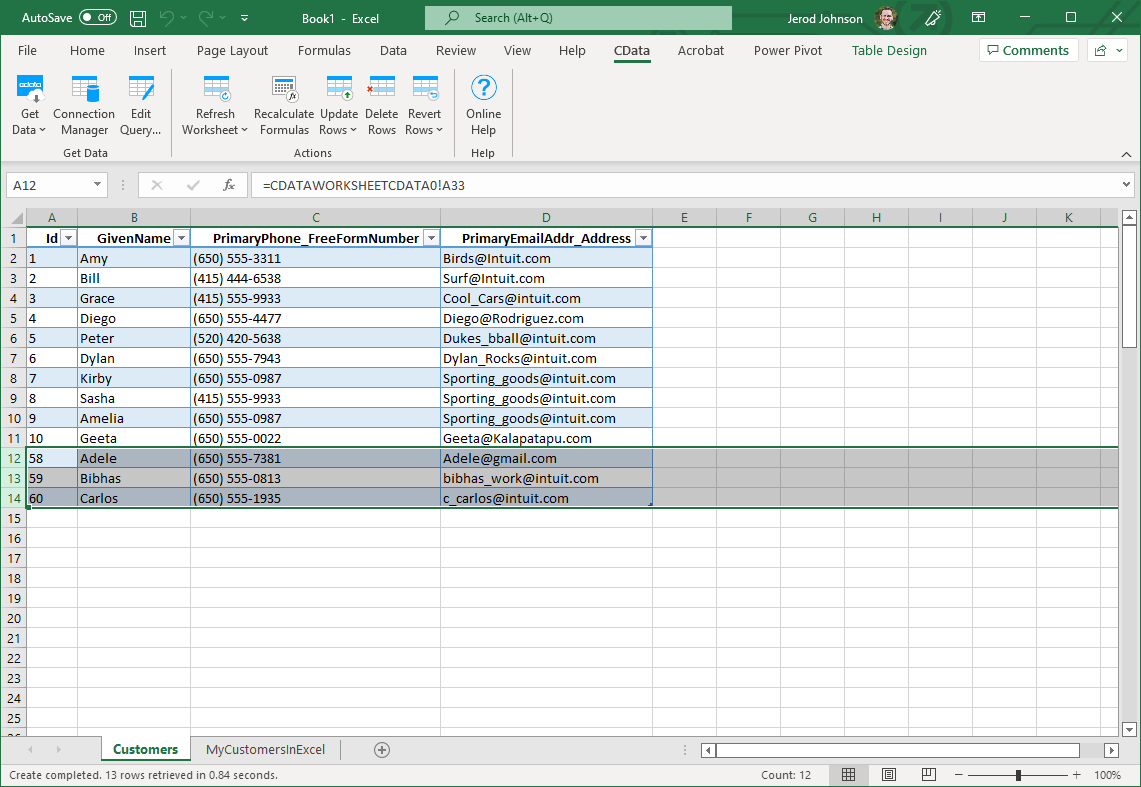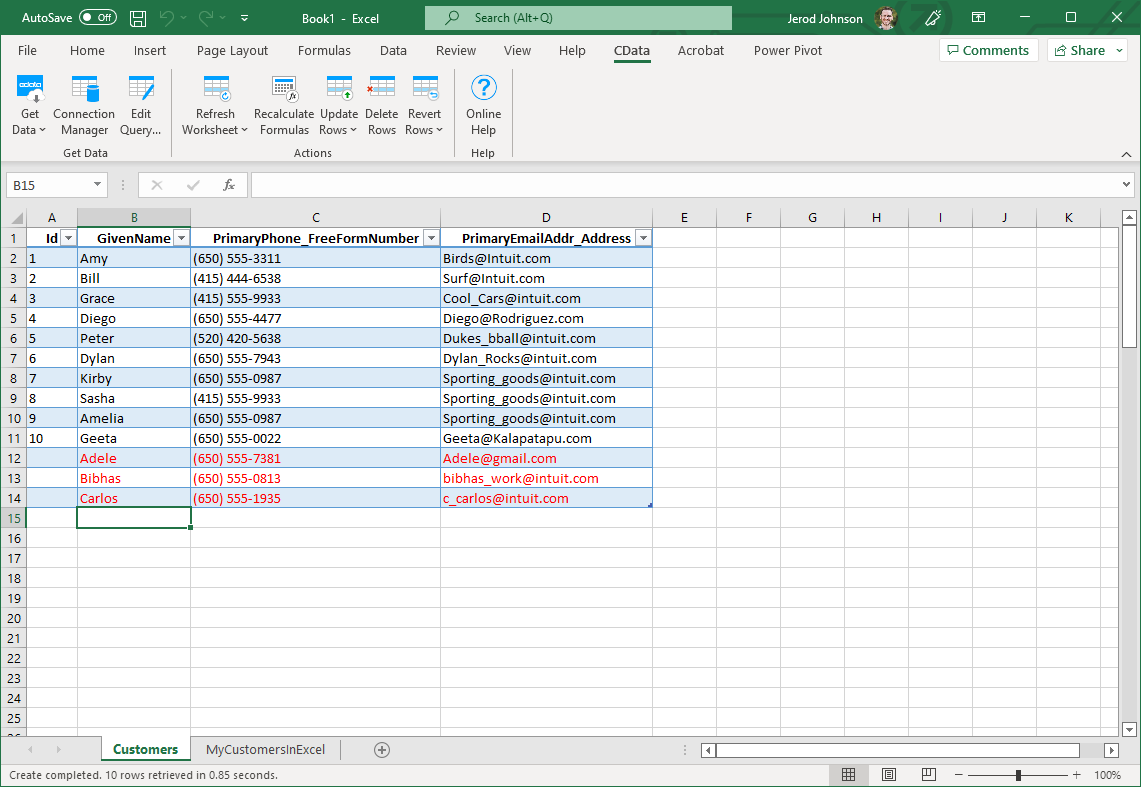Model Context Protocol (MCP) finally gives AI models a way to access the business data needed to make them really useful at work. CData MCP Servers have the depth and performance to make sure AI has access to all of the answers.
Try them now for free →How to update OData from Excel
This article explains how to transfer data from Excel to OData using the Excel Add-In for OData.
The CData Excel Add-In for OData enables you to edit and save OData services directly from Excel. This article explains how to transfer data from Excel to OData. This technique is useful if you want to work on OData services in Excel and update changes, or if you have a whole spreadsheet you want to import into OData. In this example, you will use the Orders table; however, the same process will work for any table that can be retrieved by the CData Excel Add-In.
About OData Data Integration
CData simplifies access and integration of live OData services data. Our customers leverage CData connectivity to:
- Access OData versions 2.0, 3.0, and 4.0, working with legacy services and the latest features and capabilities.
- Leverage advanced query options, including $filter, $select, and $expand, enhancing data retrieval from 3rd party tools.
- Use Server-side execution of aggregation and grouping to minimize data transfer and boost performance.
- Authenticate securely using a variety of schemes, including Azure AD, digest, negotiate, NTLM, OAuth, and more means secure authentication with every connection.
- Use SQL stored procedures to manage OData service entities - listing, creating, and removing associations between entities.
Customers use CData's solutions to regularly integrate their OData services with preferred tools, such as Power BI, MicroStrategy, or Tableau, and to replicate data from OData services to their databases or data warehouses.
Getting Started
Establish a Connection
If you have not already done so, create a new OData connection by clicking From OData on the ribbon.
The User and Password properties, under the Authentication section, must be set to valid OData user credentials. In addition, you will need to specify a URL to a valid OData server organization root or OData services file.
Retrieve Data from OData
To insert data into OData, you will first need to retrieve data from the OData table you want to add to. This links the Excel spreadsheet to the OData table selected: After you retrieve data, any changes you make to the data are highlighted in red.
- Click the From OData button on the CData ribbon. The Data Selection wizard is displayed.
- In the Table or View menu, select the Orders table.
- In the Maximum Rows menu, select the number of rows you want to retrieve. If you want to insert rows, you need to retrieve only one row. The Query box will then display the SQL query that corresponds to your request.
- In the Sheet Name box, enter the name for the sheet that will be populated. By default the add-in will create a new sheet with the name of the table.
Insert Rows to OData
After retrieving data, you can add data from an existing spreadsheet in Excel.
- In a cell after the last row, enter a formula referencing the corresponding cell from the other spreadsheet; for example, =MyOrdersSheetInExcel!A1.
![A local copy of a table. One row will be inserted. (QuickBooks is shown.)]()
- After using a formula to reference the cells you want to add to OData, select the cells that you are inserting data into and drag the formula down as far as needed. The referenced values you want to add will be displayed on
the Orders sheet.
![The range of changes to update. (QuickBooks is shown.)]()
- Highlight the rows you want to insert and click the Update Rows button.
As each row is inserted, the Id value will appear in the Id column and the row's text will change to black, indicating that the record has been inserted.




